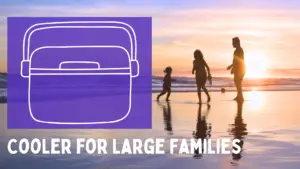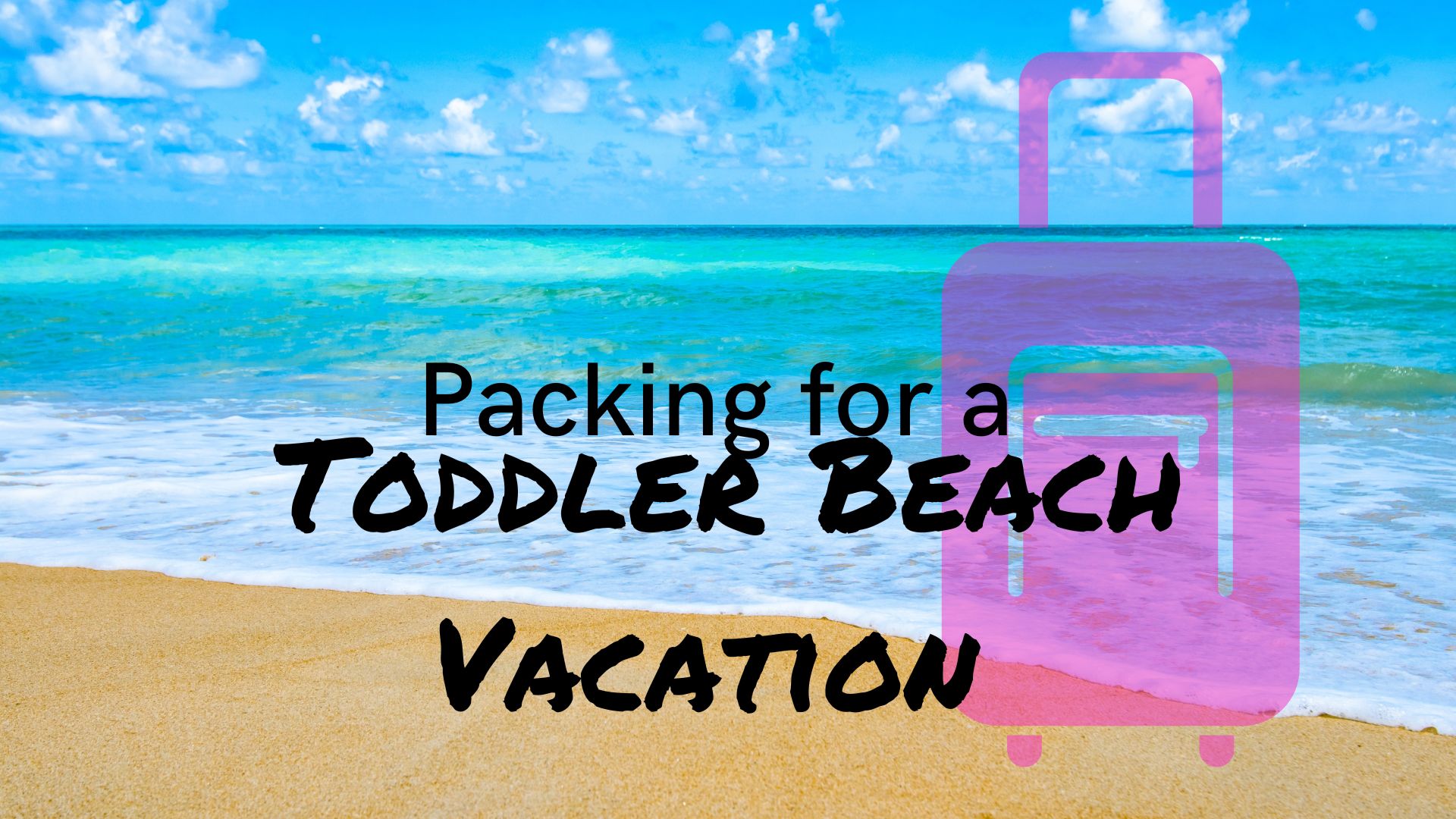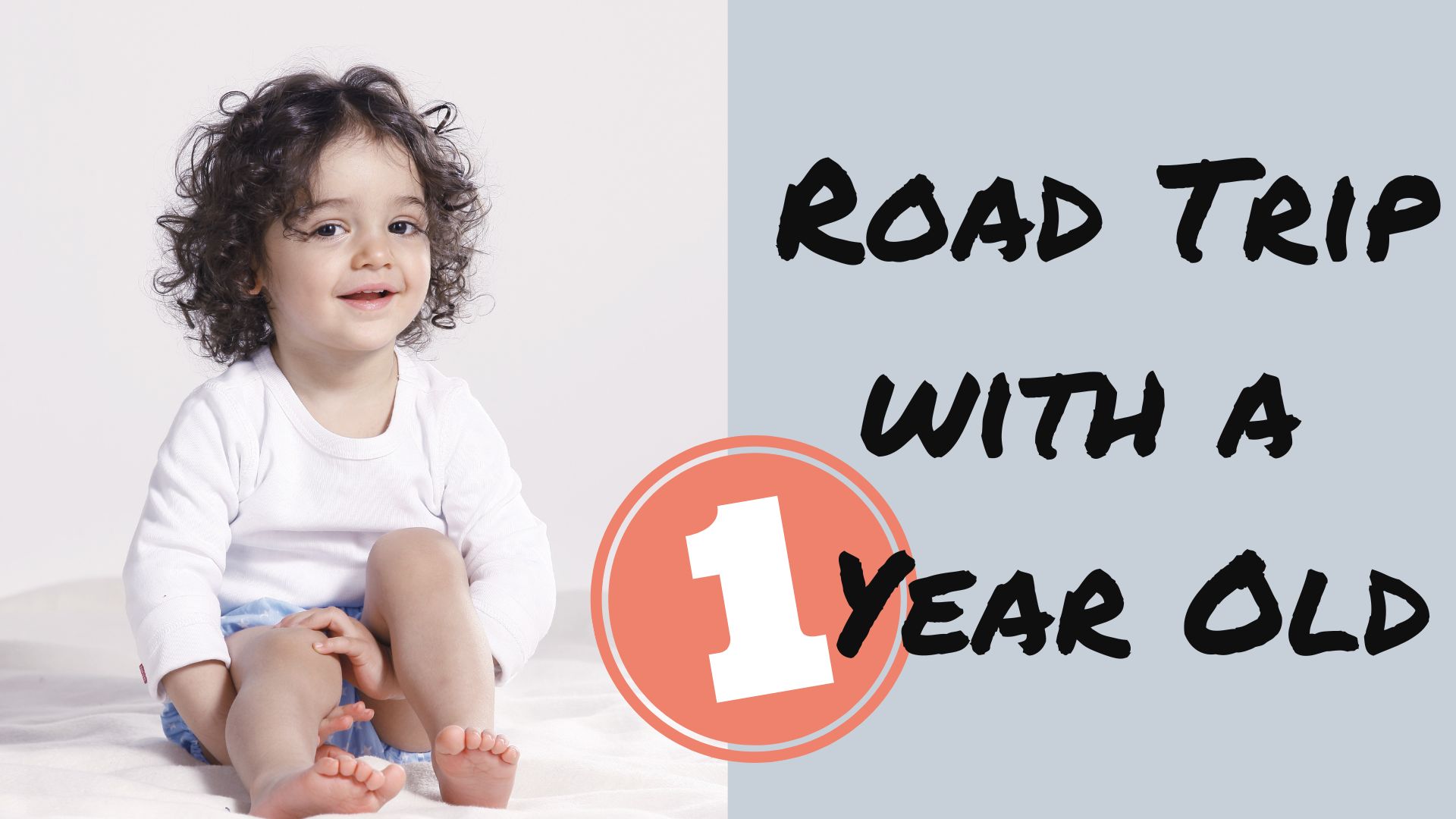When traveling with a baby the American Academy of Pediatrics recommends that you take your baby out of the car seat every 2 hours, but when can you start doing longer drives?
When a baby is older than 6 months and has full head control, talk to your pediatrician about longer stretches in the car seat. Always monitor your baby while they are in a car seat, if their head flops forward, it should be repositioned by an adult immediately.
Whenever possible a second adult should ride in the car next to your baby to monitor their breathing and their position.
If you are traveling alone, use a mirror to monitor the baby and plan to stop more frequently.
The car seat should only be used when the baby is traveling in the car and the straps should always be properly secured.
As soon as you stop driving, take the baby out of the car seat. It can be frustrating to wake a sleeping baby, but the car seat is not a safe place for the baby to sleep when the car is not moving.
When you arrive, put the baby in a flat laying position like on a play mat or into a pack and play. Laying flat is the best position for babies to sleep.
Strollers may put the baby in the same semi-reclined position as a car seat. Avoid the use of a car seat travel system and consider a lay flat stroller or baby carrier for sight seeing or traveling around your destination.
Each year babies die from suffocation or strangulation in car seats, but the vast majority of these tragedies occur when the car seat is not in the car.
We love to road trip, we travel several times a year with our 4 young kids. We have found that the 2 hour rule keeps even older kids happier in the car.
Long trips are hard on even adult bodies, so frequent stops to get out of the car and walking around are good for everyone.
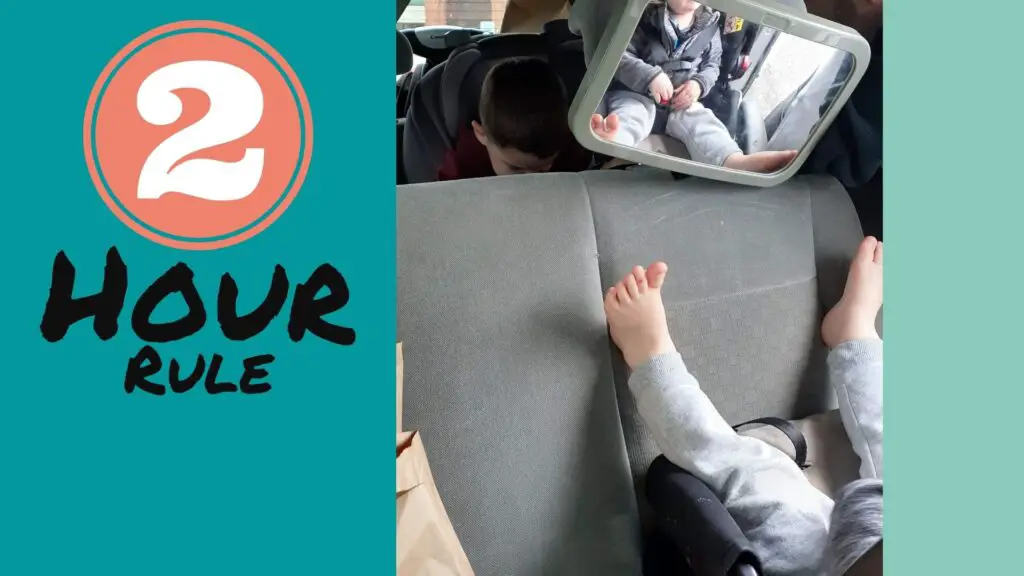
When is my baby ready to spend more time in the car seat?
Full term and preterm babies react differently in car seats, so there is no one-size-fits-all rule for when a baby can spend more than 2 hours in a car seat. Your pediatrician knows the health of your baby best and talking to them will help you make safe plans for your trip.
While the American Academy of Pediatrics recommends that babies be taken out of their car seats every two hours, the recommendation is very general and does not specify when you can go longer.
Here are a few things to look for when deciding how often to stop when traveling with a baby.
Install the Seat Correctly
No matter the age of your baby, be sure that the seat is installed correctly and at the correct angle.
If you are unsure of the installation or if you will be using a different car or car seat than usual consult a Child Passenger Safety Technician (CPST) to help. Find an expert to help you install your car seat with Safe Kids.
Head Control
Infants who demonstrate excellent head control are safer in car seats. Newborns cannot easily change the position of their own heads making it difficult for them to maintain correct posture in a car seat.
When they slump down in the car seat they can cut off oxygen and have difficulty breathing.
Preterm babies are often given a car seat test before they are released to go home. This test allows the doctors and nurses to observe the baby’s breathing and heart rate while in their car seat.
Learn more about the car seat test in this video:
If your child can hold up their own head it is a good sign that they have reduced risk of positional asphyxia.
Sleep
Many babies fall asleep in their car seats and this is fine on a trip, but as soon as you get the chance the baby should be moved to a flat lying position.
If your baby has been sleeping for a lot of your trip it may be even more important for you to take frequent breaks.
Sleeping in the car seat is actually the most dangerous time for your baby as they can slump down and restrict their own breathing.
Moving your baby to a flat laying position when sleeping is better for their spine and their breathing and heart rate.
Also consider what plans you have for your baby’s sleep at night throughout your trip. You should never allow your baby to sleep in their car seat in the hotel or at home.
When you remove a car seat from the car and place it on the floor the angle of the seat changes to a dangerous one for infant sleep.
After reading many studies and research papers, the biggest piece of advice the experts are giving us parents is to only use car seats in the car when the car is moving. Other uses are not safe for the baby.
Over half of the infant deaths that occur in reclined sleeping devices happen in car seats.
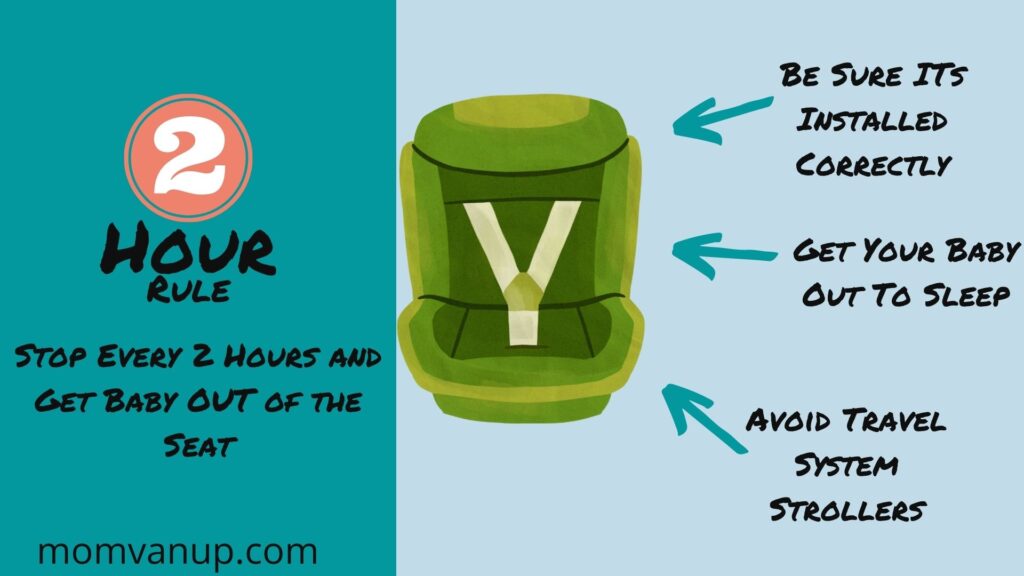
Consider the Whole Day
When planning stops on a long day of driving, consider the overall plan.
If your day includes 6-8 hours of driving, you should plan to stop very frequently.
The semi-reclined position of a car seat is hard on an infant’s body and spending the whole day in that position is not good for their spine.
If however, you plan to only cover a 2-3 hours in a 24 hour period the stops are less important.
Be sure that you are not putting the baby in that semi reclined position outside of the car, that can help them maintain good posture when they are strapped into the car seat.
Choose a Smart Stroller
Many travel system style strollers use the car seat as the seat for the stroller.
This is not a safe stroller for a long trip. Your baby needs a break from the car seat.
If this is your stroller of choice, be sure to check the level indicators on the side of the seat to ensure that it is at a proper angle when in the stroller. Refer to the users manual for information about safe use of the stroller.
Consider a cot style or lay flat stroller like the linked products to allow your baby to lay flat when you are on the go outside of the car.
Baby carriers can also be a good way to travel around with your baby when you are not driving.
Further Reading
There has been some limited research on this topic and you can read more about the studies that have been done in the following articles.
Lullaby Trust: Car Seats and SIDS
American Academy of Pediatrics: Travel Tips
Bristol Medical Journal: Car Seat Challenge Test

